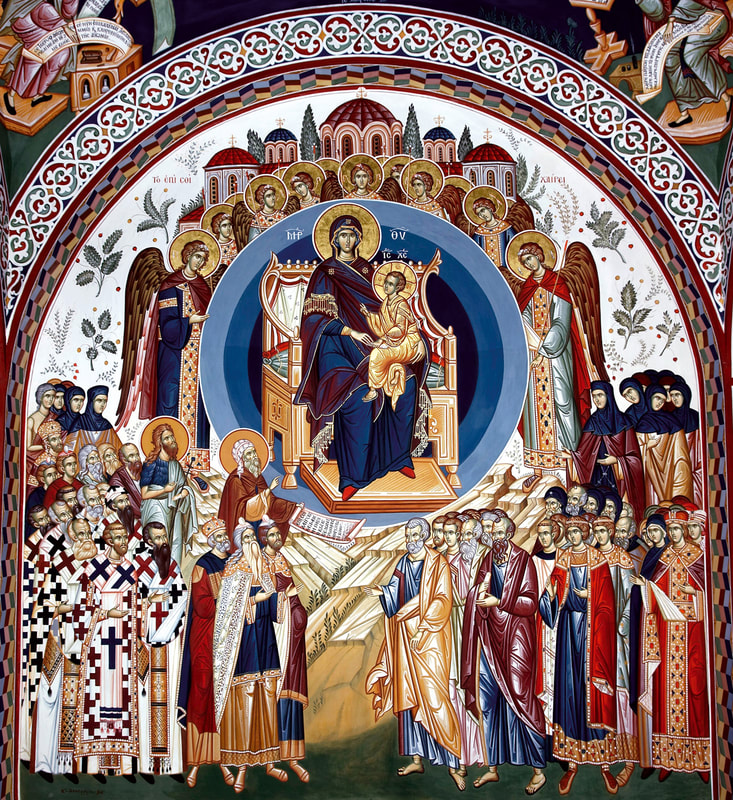|
By Fr. Nick Kotsis - On the first 5 Fridays during Great Lent, we honor Christ and the Theotokos through the Service of the Salutations to the Virgin Mary. Why? The origins go back to the 7th century AD. In 626 AD, the city of Constantinople, the capital of the Roman Empire (known as the Byzantine Empire at this point by historians), was attacked by the Avars. The Avars where a nomadic people from the Asian steppe. They entered Europe in the early 6th century and settled in eastern Europe (especially in Austria, Hungary, and Romania). For a century, the Avars attacked the Roman Empire in the Balkans and were quite a problem for them. In 626 AD, Heraclios, the Emperor of the Romans, left Constantinople on a campaign against another perennial enemy, the Persians. While he was far from the capital, the Avars attacked Constantinople. Patriarch Sergios took an icon of the Virgin Mary holding the Christ-child around Constantinople and around the great walls of the city. While doing this, the bishops, priests, and people offered up prayers to the Mother of God for deliverance from the Avars. During these long prayers, the people remained standing. That night, a great storm came to the area, destroyed the fleet the Avars were using, and forced the Avars to retreat. Because of this great victory, especially with the absence of the Emperor and the army, the Church has offered the service of the Salutations to the Virgin Mary, and over time, it became part of the Lenten schedule of services. The great hymn that comes from the service, Ti Ipermaho, recounts the Virgin Mary helping to deliver the City (Constantinople) from the enemy (“Oh Champion General, I your city now inscribe to you…”) Today, however, the hymn is not just meant for one city, but for all of the faithful Orthodox who seek intercession and deliverance from the Virgin Mary from any sort of calamity. The Salutations to the Virgin Mary is essentially a Compline Service. However, 24 stanzas (one for each letter of the Greek alphabet and each stanza begins with that letter in Greek) are added recounting the importance and purpose of the Virgin Mary to the Orthodox Faith. Many of the prayers recount instances from the Old Testament in which the Virgin Mary is understood to be present spiritually. For example, the Virgin Mary is understood as the rock in the desert, which Moses struck with his staff, which then poured out water for the Israelites. Thus, the Virgin Mary is the source of the life-sustaining water, Christ. There are many such allusions to the Virgin Mary in the Old Testament during this service. For the first 4 Fridays of Great Lent, the 24 stanzas are broken up into 6 stanzas per night. On the 5th Friday of Great Lent, all of the stanzas are prayed throughout the course of the entire service. That last service is also called the Akathistos (meaning “not sitting”) recounting the people of Constantinople standing all night in prayer to the Theotokos for deliverance from the enemy. Below, I’ve included some information about the Virgin Mary as understood in the Old Testament. That’s addendum A. In addendum B, is a little information about what happened when Emperor Heraclios conquered the Persians – as it is pertinent to the history of the Holy Cross of Christ. ADDENDUM A The Theotokos – Part II Allusions in the Old Testament 1. As we discussed last week, the Theotokos is discussed specifically on few occasions in the Holy Scripture:
Much of this was taken from, These Truths We Hold O The Holy Orthodox Church: Her life and Teachings, published by St. Tikhon’s Seminary Press written by a monk of St. Tikhon’s Monastery. ADDENDUM B Emperor Heraclios and the Holy Cross
The Holy Cross was found by St. Helen, the mother of St. Constantine, in the 4th century AD (once it was discovered and proven to be the true Cross, Patriarch Makarios of Jerusalem held it high – it was September 14th, and thus the feastday of the Exaltation of the Holy Cross on September 14th every year thereafter). It was kept in Jerusalem at that point, probably in the Church of the Resurrection. In 613 AD, Jerusalem, under the Roman Empire (the capital being Constantinople) was sacked by the Persians and the Cross was taken to Persia. In 626 AD, during Emperor Heraclios’ campaign against the Persians, the Romans defeated the Persians, and the son of the Persian king gave the Holy Cross back to Emperor Heraclios as part of the terms of peace. Heraclios took a portion back to Constantinople, but he brought most of it back to Jerusalem. At this same time, just when the war was over with the Persians, the armies of Islam burst out of the Arabian peninsula. Possibly because the Empire’s resources had been so depleted due of the war with the Persians, coupled with the ferocity of the Islamic armies, the Muslims quickly conquered most of the Middle East and north Africa within a century. However, the cross remained in Jerusalem throughout much of this period and was often hidden if things were not going well with the Muslims overlords. The cross re-appeared after the 1st Crusade c. 1099 AD, when the Latin crusaders took Jerusalem from the Muslims. However, in 1187 AD, the crusaders lost Jerusalem to Saladin. From that point on, the main portion of the cross has been lost. The part that was in Constantinople remained there until 1204, when during the 4th Crusade, the Latin crusaders conquered, and completely sacked, the city. Nearly all the important relics that were in Constantinople, including the piece of the Holy Cross that Heraclios had brought to the city, were taken to Venice or other places in the Roman Catholic world. Louis IX of France (also known as St. Louis in the Roman Catholic Church – died 1270 AD), bought 2 pieces of the cross that were taken from Constantinople. He had a church (Sainte-Chapelle) built in Paris to hold these relics. However, during the French Revolution, those pieces were lost (either pious people hid them and they have never been found, or the lunatic revolutionaries destroyed them, as they did with so many relics that were in French churches during the revolution). I don’t know what happened to the portion of the cross Louis IX did not buy. It was probably kept by the Venetians, but I’m not sure. Comments are closed.
|
AuthorsMessages written by the clergy of our parish. Archives
May 2021
Categories
All
|
© 2023
Saint Nicholas Greek Orthodox Church
3109 Scio Church Road, Ann Arbor, MI 48103
Phone: (734) 332-8200
Fax: (734) 332-8201
Saint Nicholas Greek Orthodox Church
3109 Scio Church Road, Ann Arbor, MI 48103
Phone: (734) 332-8200
Fax: (734) 332-8201


 RSS Feed
RSS Feed
